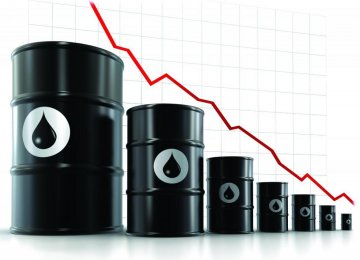President Hassan Rouhani took next year’s budget to the parliament on Sunday. It looks balanced.
Mohammad Baqer Nobakht, the man in charge of putting the budget together, also said it’s balanced.
However, we are not sure it will turn out as such in the end. A comparison between the government’s expected oil revenues and what is going on in the market reveals a hole in the administration’s income plans.
Let’s not get ahead of ourselves here. First, it is a bad time to rely on commodities for income, crude oil in particular. A slowdown of economic activity in the world is curbing appetite for commodities.
For oil, sheer oversupply from just every major oil producer—the US, Russia and Saudi Arabia are leading the charge—is exacerbating the pain. In a market awash with oil, Iran is adding more.
Tumbling Crude
The United States on Saturday revoked sanctions that had slashed Iran’s oil exports by around 2 million barrels per day since its pre-sanctions 2011 peak to little more than 1 million bpd.
On Sunday, Iran–a member of the Organization of Petroleum Exporting Countries–said it was ready to increase its exports by 500,000 bpd, though some analysts find it “not very realistic” as Iran needs time to fully revive its export infrastructure that has suffered from years of underinvestment.
“Iranian exports come at a very bad time,” said Barclays analysts.
Worries about Iran’s return to an already glutted oil market drove down Brent to $27.67 a barrel early on Monday, its lowest since 2003. The benchmark was at $28.17 by 0733 GMT, down 2.7% from its settlement on Friday.
US crude was down 64 cents at $28.78 a barrel, not far from a 2003 low of $28.36 hit earlier in the session.
Spending Need
Why is Iran adding to the glut, you ask? Lower oil prices mean less income, though Iran’s increasing output will more than make up for the decline in crude prices it garners.
More importantly, the government is very short on revenues. It has many outstanding commitments. And it needs to spend to avoid stalling Iran’s fragile recovery.
Mismanagement under former president, Mahmoud Ahmadinejad, as well as corruption, sanctions and the collapse in oil prices, has shrunk economic output. Hence, other income sources are also under duress.
While, as Rouhani pointed out, the budget is not an expansionary one. But if you look at it in detail, the budget is up over 13% compared to the previous year.
Officials are betting on getting more tax income to make up for lost oil revenue. In fact, the administration is expecting to make only a quarter of the money it needs through oil sales.
Buoyant Planning
So where’s the hole? It is the price the government has put down for the oil it sells. The oil’s expected price of $35-$40 per barrel is way above the $28 per barrel it is trading now.
Goldman Sachs Group Inc. said recently that the global surplus of oil is even bigger than thought and that could drive prices as low as $20 a barrel.
“The oil market is even more oversupplied than we had expected and we now forecast this surplus to persist in 2016,” Goldman analysts, including Damien Courvalin, wrote in the report, Bloomberg reported.
So it is hard to see how the government wants to make up for the difference. The same wishful predictions plague tax revenues, which the government claims will grow by 14% to 17%, depending on who you ask.
And for foreigners, this overreaching style of planning may seem this government’s issue, but in Iran, it is a tradition all governments have zealously adhered to.
In 2008, when oil was dropping from a $140 per barrel all-time high, due to the worst economic crisis in recent past, Ahmadinejad obstinately believed it would not drop below $100. It bottomed below $40 a year later, to the administration’s dismay.
This is where the real question comes to the fore. Which is more damaging, bad economic conditions or wishful planning?





